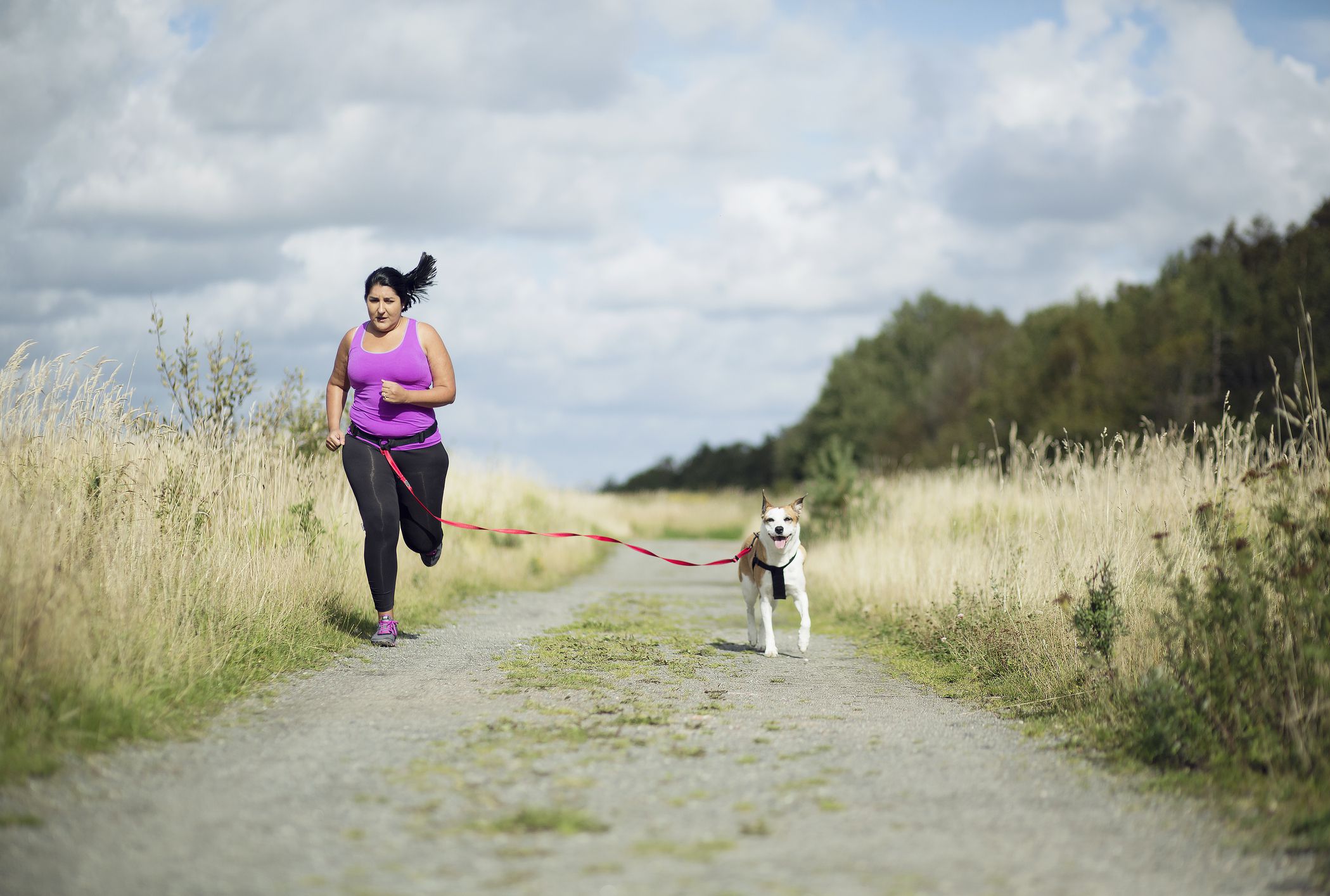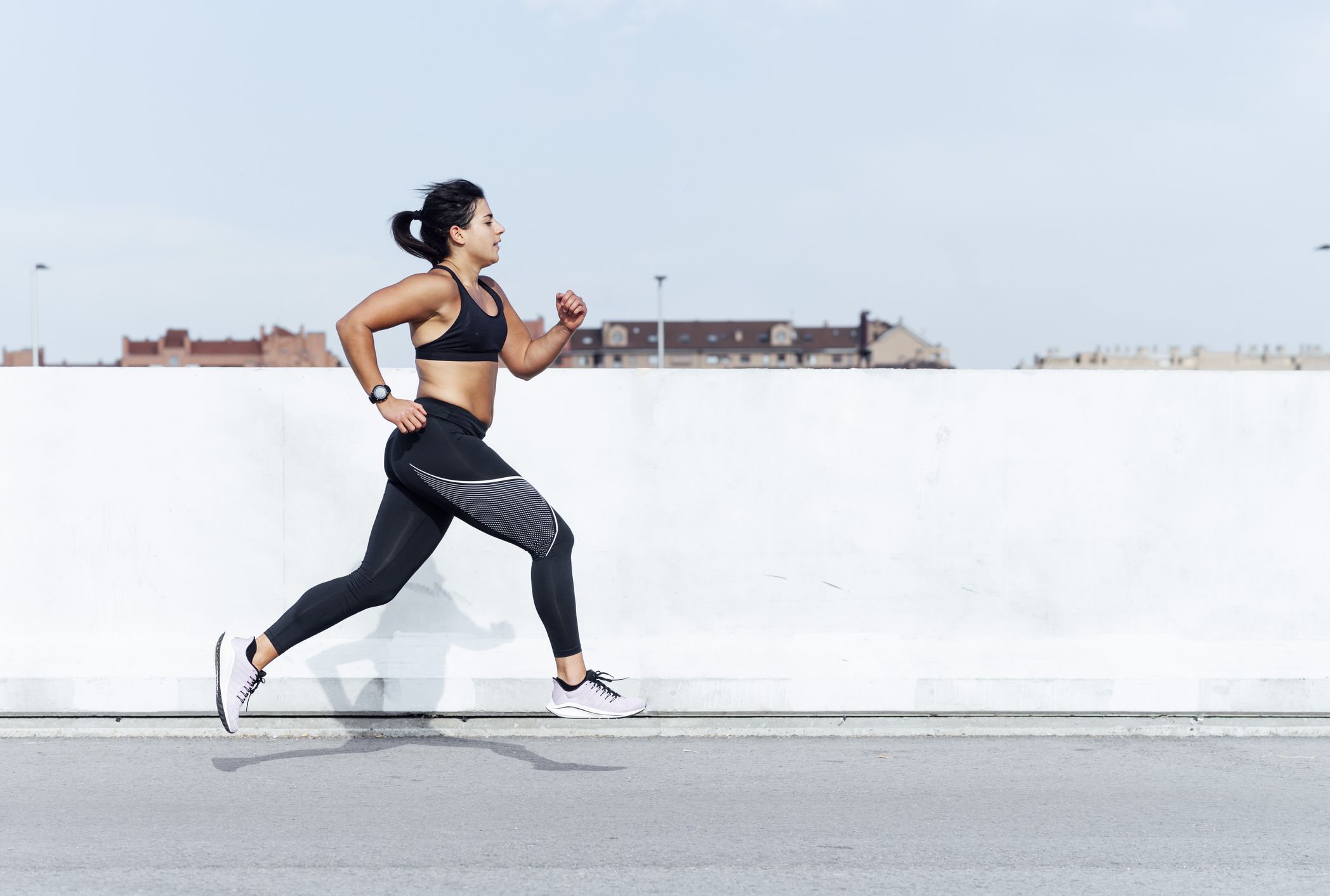
While every pet owner has a variety of reasons for choosing their furry friend, most have one thing in common—they like being around their pet! Maybe this means lots of cuddles on the couch, but pets, particularly canine companions, can join in on plenty of other activities, too—even workout goals! Running with your dog can be a great bonding activity. You have to take your dog out anyway, why not turn that into a morning, afternoon, or evening jog?
Before you ramp up your usual walks, it’s important to understand a few key things about running with a dog. This way, you’re both prepared to handle the speed, distance, and obstacles that may come up during a run.
How to Decide Whether or Not to Run With Your Dog
Not every human is a natural runner, and not every dog is suited to running. Certain factors and characteristics may prevent your dog from being an appropriate running partner.
Puppies, in general, should not be relied upon as running buddies, largely due to their lack of training while they’re still early in the learning phase. They also may not be ready to interact with other people or dogs you run into, because of medical records (they’ll need to be up-to-date on shots before hitting the streets) or behavior tendencies. Additionally, running can be hard on the joints for dogs who are too young (or old).
Melissa Schiraldi, an ADI certified dog trainer, NADOI certified dog obedience instructor, and founder of True Love Dog Training, says that generally, a healthy, medium to large size dog with moderate to high energy level is suited to running. She notes that some breeds, particularly smaller dogs like dachshunds and corgis, often do not have the stamina for long runs.
Melissa Schiraldi, ADI certified dog trainer and NADOI certified dog obedience instructor
Breeds from the working, sporting, or herding groups are generally bred to enjoy vigorous activity and have good stamina. Cattle dogs, border collies, vizslas, and huskies are breeds that come to mind as ideal runners.
— Melissa Schiraldi, ADI certified dog trainer and NADOI certified dog obedience instructor
Of course, dogs with underlying health conditions who cannot handle heavy exertion should not be taken on runs. Additionally, old age may prevent, or severely limit, your dog’s ability to run. If your dog is suffering from any special condition, do not attempt to take them on a run without approval from your vet.
Tips for Running With Your Dog
Once you’ve gotten clearance from your vet to make your dog your new exercise buddy, it’s time to hit the trails! A few helpful tips will make this experience easier and more enjoyable for both of you.
Ensure Your Dog Has the Right Behavior Training
Behaviorally speaking, your dog should meet certain guidelines before you take them on a run with you. They need to know and follow basic commands (come, sit, stay, no, etc.) and must be trusted to return to you in an unintended instance of separation. They need to be polite to other people and dogs you may encounter on your run, and able to ignore them rather than stop to play (or fight) when you’re in your stride. It can be easiest to run with your dog if they know how to heel, so you aren’t worried about them running ahead or behind and tripping you up.
As a baseline, make certain that your dog is comfortable and well-behaved during a walk before attempting to run with them.
Start Off Slow
People don’t start off by running a marathon, and our four-legged friends can’t either. When your dog is just beginning to run with you, start slow and build up—both the pace and the distance.
“Just as for a human, dogs should be introduced to exercise gradually to build up their strength and stamina,” Schiraldi says. “A person who is generally sedentary will not be able to run a 5k right away, and the same goes for a dog. Additionally, like us, a warm-up (walking, light jogging) and cool-down will help regulate a dog’s body during exercise.”
Plan for the Dog’s Needs
Chances are high you plan for your own running needs ahead of time—water breaks, accessible bathrooms, etc. Consider the same needs for your dog.
Running with your dog will make them thirsty! If there are no dog-accessible water stations on your route, be sure to bring a portable dish they can drink out of that can be filled but a public water source, or by your own water bottle (if the latter, bring extra). Pack poop bags in case of a bathroom break—and be prepared to take a break from your stride for a potty time possibly more than once.
Have the Right Mindset
Running with your dog should be fun for both of you. If you are participating in serious training, you should plan to do that separately. You’re likely going to have to stop for bathroom and drink breaks, so breaking a personal record probably shouldn’t be your biggest concern.
Use the Right Equipment
In addition to any hydration products and of course, bags to clean up after your dog, you want to ensure you have the right equipment for running. Your dog needs a secure collar or harness and leash, which can withstand speedy changes in direction without coming unclipped or allowing your dog to slip out. You may want a shorter leash than you use while walking, to keep your dog closer to you.
Benefits of Running With Your Dog
Whatever your reason is for running, you’ll experience many physical, mental, and emotional benefits of the activity. These same perks help your canine companion, too. Dogs need daily exercise to keep their brains and bodies active, and running can be an excellent way for them to stay in shape, as long as they’re healthy enough to run.
Reliable Running Buddy
Having a running buddy is another benefit of taking your dog on runs with you. They’ll never cancel because of a long day in the office or plans with other friends. And even on days when you aren’t feeling like lacing up those sneakers, your dog will be ready to go! That being said, keep in mind that both you and your dog will need rest days—pay attention to their non-verbal cues that it’s time for a break.
Increased Safety
Having a dog as a running buddy also increases your safety. Dogs naturally watch out for their owners and alert them to potential dangers, and they may keep people from bothering you, too. Or, if you’re trying to meet other runners, they’re an excellent conversation starter!
The Opportunity to Bond
Bonding is a brilliant perk of running with your dog. “Every dog owner should become a student of dog body language, and get to know your individual dogs’ ways of communicating with you; dogs communicate non-verbally, and making the effort to learn your best friend’s language will deepen your relationship in so many ways,” Melissa shares.
How to Stay Safe
While many safety tips for running alone will transfer over to running with your dog, there are a few pet-specific tips that can be used to make running together a fun, safe experience.
Walk Before You Run
“Teach your dog to walk before they can run!” Schiraldi says. “Especially in the beginning of training, take breaks frequently to allow your dog to regulate their breathing and have water. Allow your dog to stop anytime they want to—if your dog tells you he wants to stop, don’t push him.”
Dress Appropriately
Your dog doesn’t have the same ability to dress for the weather as you do. Extreme heat and extreme cold aren’t good for running with dogs—pay attention to your dog’s threshold for temperate when on a walk, and pack extra water when it’s warm. Depending on your dog, rain and/or snow might be a no-go, too. If they are running in ice or snow, make sure to wash their feet afterward, as salt on roads and sidewalks can be harmful.
Be Aware of Possible Obstacles
Even the most well-trained dog can have slip-ups. There are risks to running with your dog to be aware of. Your dog could get excited or scared and unexpectedly jerk the leash, causing you to fall. Or you might be the one to unexpectedly change direction, causing you and your dog to collide. Obstacles may also prove harder to navigate with your dog at your side than when you’re alone.
Other people and dogs are also uncontrolled factors. People and dogs may try to engage with you and your dog, disrupting your run—even if they mean well. Some people are scared of dogs, and seeing one running toward them may cause a negative reaction. Be on the lookout for other people and pets in your path that may cause interference.
Running at Night with Your Dog
If running at night, use reflective gear on your dog as well as on yourself; dark dogs especially can be difficult to see. Even if pedestrians or vehicles see you, they may not notice a smaller form next to you. You can find reflection collars, leashes, vests, etc. and even dog tags that light up for safety during night activities.
A Word From Verywell
Running with your dog can be an excellent form of exercise for you both, as well as a chance to bond. Be sure to talk to your dog’s vet before bringing them on a run with you, and routinely check in with your dog’s behavior (emotional and physical) to ensure they can handle it.
Frequently Asked Questions
-
How many miles can I run with my dog?
Every dog is different; some may top out at half a mile, some may be happy to run two miles, and some may join you on long-distance runs. It’s important to start slow and build up, and pay attention to their body language.
-
Is it harder to run with a dog?
Yes, it is harder to run with a dog because of the additional factors you must consider. However, if your dog is a good fit for running, it can be a mutually beneficial activity you both enjoy, and can be even more rewarding!
-
Can I run with my dog every day?
While dogs need some exercise every day, running every day may be too much for your dog. Again, every dog is different and it’s important to start slow and carefully ramp up your exercise routine. Discuss your dog’s exercise needs and abilities with your vet before attempting to run every day.




















